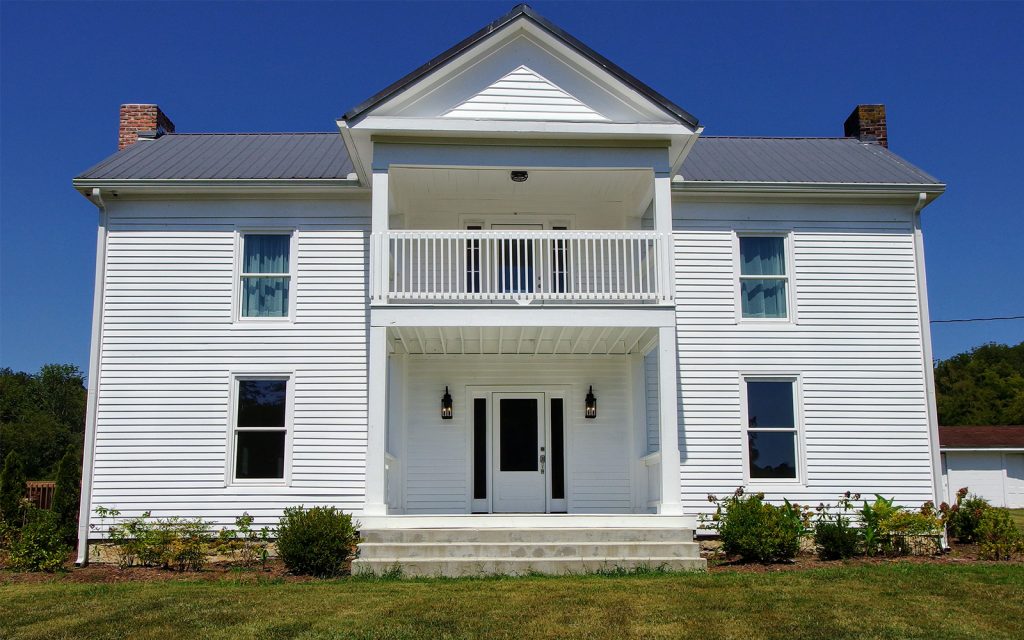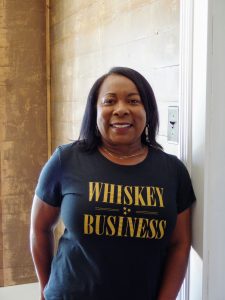Uncle Nearest’s Forthcoming Distillery Contextualizes Whiskey History
As the project nears completion, the company’s list of lesser-known initiatives surfaces—and tells a tale of love, respect and legacy

Lynchburg, Tennessee lies at the center of plenty of whiskey history. Today, there is Jack Daniel’s massive distillery, visitor’s center and adjacent attractions—Miss Mary Bobo’s included. But 20 minutes north in Shelbyville, there’s new whiskey to be served and even older history to tell. Far more than an amendment to America’s most storied spirits brand, Uncle Nearest Whiskey spotlights a rarely mentioned individual who this nation oft ignores and a larger trait of our history books: African Americans at the center of almost all American developments. Distillation is no exception. Nathan “Nearest” Green taught Jack Daniel to distill, perfected the Lincoln County Process (which is a requirement for Tennessee Whiskey to be named as such) and was the first African-American distiller in the nation’s history.

“Nearest was the first African American distiller,” Fawn Weaver, the brand’s CEO, explains. “He wasn’t the only one, but he’s the only one we know by name—and the only one since, in a 400-year span.” The disparity between the current-day demographics of the spirits industry and the staff of those storied ones centuries ago couldn’t be more different. “African Americans helped at plenty of distilleries,” Weaver adds. “Hopefully this story uncovers others.”

In launching the brand (which now boasts four iterations to date) Weaver did not seek to capitalize on the untapped tale. Rather, as an investor and author by trade, she became hooked on a story and sought to share it. She and her husband ventured from Singapore to Lynchburg for her 40th birthday, and, as SVP of Global Sales, Kate Jerkens explains it, “She never left.” During Weaver’s time there, while living in a fixer-upper under a mile from the Dan Call Farm (where Green taught Daniel), she took out ads in the local paper seeking information on Green, took secretive meetings in her car, and did her best to balance the fine line between subverting history and revising it.

The 12-month project resulted in a collection of 10,000+ pertinent artifacts, 2,500+ hours of interviews and a rotating roster of 20+ historians, archivists, archaeologists, conservators and genealogists. Weaver, while at the center of it all, never insisted that this was her project, or even one she wanted to claim sole responsibility for telling. “I’m much more comfortable behind the scenes,” she says. “I tell my team this: the sooner they can get me back there the better.” She’s joking, but not entirely. She’s the outspoken and fervent leader of the brand and a thrilling storyteller, but she’s just as passionate about giving this story to Green’s descendants to cherish, too.
This is our family’s name, this our legacy
 Victoria Eady-Butler, Green’s Great-Great Granddaughter is the brand’s director of administration and she hand-picked the blend for their 1884 (the year Green retired) iteration. When Eady-Butler’s grandmother told the story of Nearest on her porch, she didn’t necessarily grasp its significance. She admits she didn’t until high school. “There has never been any Jack Daniel made without a Green on property there,” she says. To this day, a Green descendent works there. But now the mentor behind that brand has one of his own. “What [Fawn] has done for my family cannot be repaid. Fawn is like family to me now. This is our family’s name. This our legacy. She brought the family in. She wanted to ensure that the family was good with whatever she did.”
Victoria Eady-Butler, Green’s Great-Great Granddaughter is the brand’s director of administration and she hand-picked the blend for their 1884 (the year Green retired) iteration. When Eady-Butler’s grandmother told the story of Nearest on her porch, she didn’t necessarily grasp its significance. She admits she didn’t until high school. “There has never been any Jack Daniel made without a Green on property there,” she says. To this day, a Green descendent works there. But now the mentor behind that brand has one of his own. “What [Fawn] has done for my family cannot be repaid. Fawn is like family to me now. This is our family’s name. This our legacy. She brought the family in. She wanted to ensure that the family was good with whatever she did.”

Long before the distillery ever appeared ready to open, Weaver oversaw the restoration of Green’s burial place (Highview Cemetery, a cemetery across the road from Jack Daniel’s plot), the acquisition and renovation of the Dan Call Farm, farmhouse (which now hosts Green family photos and brand insignia), the site of the Old No. 7 distillery (where Nearest taught Jack) and the renaming of the driveway leading onto the farm to Nearest Green Way. An integral part of Green’s story, just the same as Daniel’s, is the Dan Call Farm—and having the opportunity to take visitors there before the forthcoming distillery is a luxury neither party takes for granted.

And as the distillery’s construction shifts from phase one to phase two, this new attraction will act as the face of the brand. But its heart—the family, farm, farmhouse, cemetery, foundation and the very water supply the first distillery sourced from—remains close by. “It really is more than whiskey,” Eady-Butler adds.
The 270-acre Shelbyville compound will feature a Tennessee Walking Horse facility (wherein Weaver’s horse Toppy will reside), a horseshoe-shaped bar for tastings, a bottling house, tours of the distillery, a sunset bar and other forthcoming additions. The space will open to the public on 14 September.
Images by Evan Malachosky












